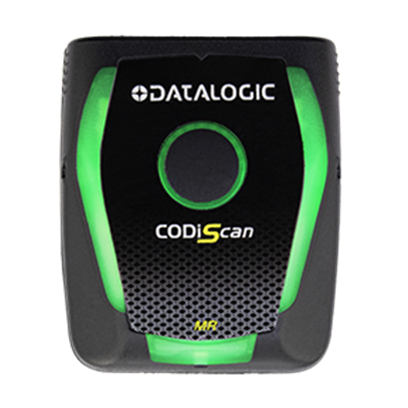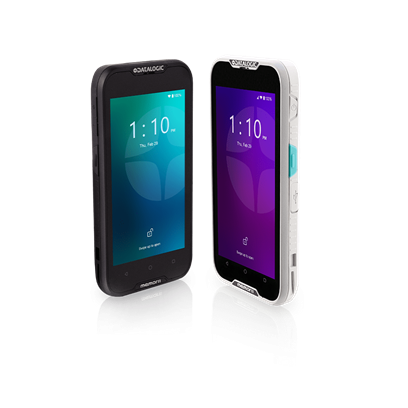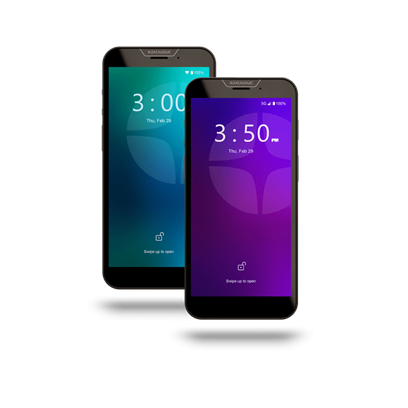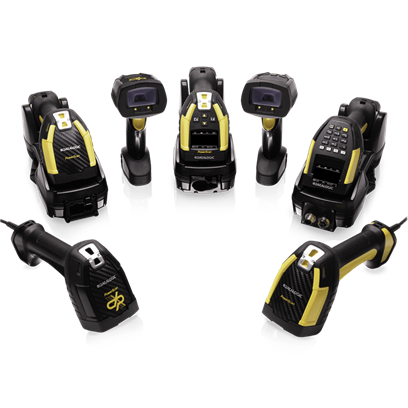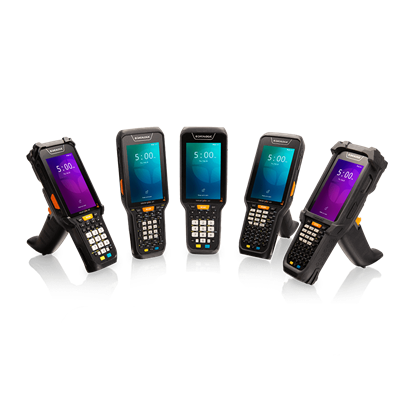
Logística de entrada para bebidas y alimentos
Logística de entrada para bebidas y alimentos
La logística de entrada en la industria de fabricación de alimentos y bebidas hace referencia a los procesos y actividades específicos que intervienen en la gestión del flujo de materias primas, ingredientes y materiales de envasado desde los proveedores hasta las instalaciones de fabricación de las empresas de alimentación y bebidas. Abarca los retos y consideraciones específicos asociados a la manipulación de mercancías perecederas y, a menudo, sensibles a la temperatura. La logística de entrada incluye la manipulación de carretillas elevadoras, la inspección de las mercancías entrantes y la realización de controles de calidad.
Los aspectos clave de la logística de entrada en la fabricación de alimentos y bebidas son los siguientes:
- Recepción e inspección: Recepción de los envíos entrantes, comprobación de la cantidad y calidad de las mercancías e inspección de las mismas para detectar posibles daños o discrepancias.
- Control de calidad: Dada la importancia de la seguridad y la calidad de los alimentos, la logística de entrada en la industria de alimentación y bebidas implica estrictas medidas de control de calidad. Esto incluye verificar la calidad e integridad de las materias primas entrantes mediante inspecciones, certificaciones y el cumplimiento de los requisitos normativos.
- Transporte: Coordinar el movimiento de mercancías desde los proveedores hasta las instalaciones de la empresa. Esto puede implicar la elección del modo de transporte adecuado (como transporte por camión, por barco o por avión), la contratación de transportistas y la optimización de las rutas de entrega.
- Depósito y almacenamiento: Almacenar las mercancías recibidas en almacenes o instalaciones de almacenamiento hasta que se necesiten para la producción. Esto implica la gestión del inventario, garantizando unas condiciones de almacenamiento adecuadas y organizando las mercancías para facilitar su recuperación.
- Gestión de inventarios: Seguimiento y control de los niveles de inventario para garantizar un suministro adecuado de materiales y reducir al mínimo el exceso de existencias. Esto incluye la previsión de la demanda, la gestión de la reposición de existencias y la coordinación con los proveedores para evitar la falta o el exceso de existencias.
- Trazabilidad y conformidad: En la industria alimentaria y de bebidas, la trazabilidad es esencial para identificar el origen y el movimiento de ingredientes y materias primas. La logística de entrada incluye el mantenimiento de registros y documentación precisos para cumplir la normativa, como los requisitos de etiquetado y el seguimiento de las retiradas de productos en caso necesario.
Mediante una gestión eficaz de la logística de entrada en el sector de la fabricación de alimentos y bebidas, las empresas pueden mantener la calidad del producto, reducir los residuos, cumplir la normativa y garantizar la disponibilidad puntual de los materiales para la producción, lo que en última instancia contribuye a la satisfacción del cliente y a la reputación de la marca.
SOLUCIONES PARA CARRETILLAS ELEVADORAS
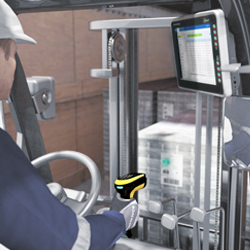
El Datalogic PowerScan™ 2D Auto-Range permite a los operarios de carretillas elevadoras escanear códigos de barras 1D y 2D en artículos que deben reposicionarse sin salir del vehículo. Precisa a múltiples distancias de lectura, la unidad proporciona una identificación eficaz durante las operaciones con carretillas elevadoras en todo tipo de condiciones. Combinado con el dongle SD9030 y el terminal embarcable Rhino II, el PowerScan 2D Auto-Range ayuda a ofrecer una trazabilidad completa en entornos intralogísticos.
Las carretillas elevadoras son uno de los equipos más importantes en los centros de fabricación, almacenamiento y distribución de alimentos y bebidas. Casi todas las materias primas, aditivos y productos acabados descansan, en algún momento, sobre las horquillas de acero de estas pequeñas carretillas. Como parte integral del flujo de trabajo logístico, las operaciones con carretillas elevadoras, con el apoyo de un escáner de mano como los de la serie PowerScan de Datalogic, presentan una excelente oportunidad para la identificación de mercancías y la promoción de la trazabilidad completa en entornos intralogísticos.
Por su flexibilidad y fiabilidad, la serie PowerScan 9600 se adapta a las necesidades de casi cualquier entorno. El dispositivo único, equipado con un lector de alcance automático, captura de forma eficaz y precisa los códigos de barras a distancias cercanas, medias y lejanas. La capacidad del escáner para utilizarse en todo tipo de condiciones, con tiempos de lectura rápidos y el punto verde de Datalogic de «buena lectura», favorece aún más la eficacia de las operaciones de almacén.
Para seguir el ritmo de la logística moderna, Datalogic ha construido sus escáneres para la lectura dinámica de códigos de barras. La tolerancia superior al movimiento significa que los operadores de carretillas elevadoras pueden capturar códigos tanto en situaciones estáticas como dinámicas sin tener que bajarse del vehículo. Esta flexibilidad proporciona una alta eficiencia operativa en todo el entorno.
Por supuesto, cualquier lector de códigos de barras industrial debe ser capaz de soportar el rigor de los trabajos más duros en entornos intralogísticos exigentes. Aquí brillan los escáneres de Datalogic. El PowerScan 9600, por ejemplo, cumple las normas IP65 e IP67. La tecnología de batería inteligente y la carga inalámbrica maximizan la eficiencia de la carga y la duración de la batería, garantizando que el escáner esté siempre listo para funcionar.
INSPECCIÓN DE ENTRADA

Los trabajadores deben realizar un seguimiento e informar en tiempo real de las piezas recogidas en las operaciones de almacén. El terminal portátil Datalogic Skorpio X5™ es la elección óptima para cualquier aplicación que requiera una recogida de datos fiable en movilidad. Ofreciendo el máximo rendimiento y robustez en un diseño ergonómico, el Skorpio X5 incluye un exclusivo generador de imágenes de rango medio y un generador de imágenes 2D de rango extra largo (XLR).
La inspección de entrada es un paso fundamental para garantizar la calidad en la industria alimentaria y de bebidas. También conocida como inspección de recepción o de materiales, el proceso valida la calidad de las materias primas adquiridas en función de los criterios específicos almacenados en el sistema de gestión de almacenes. El Datalogic Skorpio X5 permite al personal de control de calidad resolver los problemas durante la preproducción, ahorrando tiempo y dinero. Así es como funciona.
Utilizando las capacidades de lectura de códigos de barras lineales y 2D de alcance extralargo del Skorpio X5, la información de identificación del producto se lee y luego se verifica utilizando un terminal de datos portátil (PDT). A continuación, esta información se transmite eficazmente al sistema de gestión de almacenes (SGA). Al cotejar las mercancías recibidas con una lista de recepción, se verifica la cantidad, la calidad y el estado previstos de los productos. Este proceso también impulsa la eficiencia en sentido descendente al garantizar que los artículos registrados se trasladan y almacenan en las ubicaciones adecuadas y se inventarian correctamente para su recogida, seguimiento y posterior identificación.
El Datalogic Skorpio X5 es un ordenador portátil avanzado con el que los inspectores de recepción pueden gestionar y procesar fácilmente productos con códigos de barras ausentes o ilegibles. El personal puede introducir manualmente información que se comparte automáticamente con el SGA mediante el PDT. Identificar rápidamente los artículos entrantes y corregir sobre la marcha las lecturas incorrectas permite a las empresas solucionar rápidamente los problemas con el producto o el proveedor.
El corazón de Skorpio X5 es un potente procesador con el último sistema operativo Android. Este ordenador móvil ultrarrápido y de alto rendimiento basado en teclado tiene la pantalla multitáctil más grande del mercado de los PDT. Ofrece todo lo que las empresas necesitan para garantizar la máxima productividad y destacar en términos de eficacia y eficiencia. Los usuarios podrán incluso ejecutar simultáneamente las aplicaciones móviles más exigentes. Su diseño ergonómico, ligero y resistente hace que el Skorpio X5 sea cómodo y práctico, incluso en los entornos más exigentes. La carga inalámbrica fiable y la capacidad de «intercambio en caliente» de las baterías hacen que el dispositivo sea adecuado para turnos largos y esté listo para escanear sin interrupciones.
INBOUND CONTROL DE CALIDAD DE LAS ENTRADAS
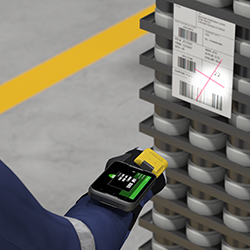
Tras la inspección de entrada, los almacenes realizan un control de calidad. Se verifica que cada artículo esté libre de daños u otros defectos. Los productos que superan el examen se clasifican como «buenos» y se almacenan o envían a procesamiento. Los que no superan la inspección se retiran de la cadena de suministro. El control de calidad requiere una identificación adecuada de los artículos, la asignación del estado de calidad y el seguimiento de los artículos para garantizar una trazabilidad completa en el SGA. Codiscan de Datalogic emparejado con su PDA Memor 11™ es la solución de lectura de códigos de barras portátil ideal, que permite una amplia gama de aplicaciones en el entorno del almacén.
Mantener la calidad en toda la cadena de suministro de alimentos y bebidas es imprescindible para cumplir las normas de seguridad y garantizar la frescura del producto. Uno de los eslabones más importantes en el control de la calidad es la inspección de los productos o ingredientes cuando llegan a las instalaciones procedentes de los proveedores. Afortunadamente, la identificación impecable de los productos y la gestión eficaz de los datos son posibles gracias a un escáner de mano ligero y portátil conectado a un asistente digital personal como el Memor 11 de Datalogic.
El «Codiscan» de Datalogic es el escáner portátil más ligero y pequeño del mercado. Entre sus principales ventajas se incluyen la facilidad de uso, la recogida manos libres y la captura rápida de datos. Estas características aceleran drásticamente la productividad al tiempo que reducen las tareas repetitivas innecesarias y los errores asociados. Montado de forma cómoda y ergonómica en el dorso de la mano, el Codiscan es más fino y menos intrusivo que los escáneres tradicionales montados en anillo.
El Memor 11 de Datalogic es una PDA totalmente táctil de última generación con un escáner megapíxel y una pantalla de 5 pulgadas. Se ha diseñado para empresas que buscan la potencia de un ordenador móvil con un diseño robusto, una gestión de la batería ultrafiable y un rendimiento de escaneado mejorado. Tiene un diseño robusto para soportar las condiciones más duras, pero es lo suficientemente fino y compacto para que el operador lo lleve cómodamente en la mano.
El tratamiento eficaz de los datos comienza con una captura de datos fiable. La combinación de Codiscan y Memor 11 proporciona facilidad de manejo con una solución de lectura de códigos de barras manos libres para el personal de almacén en cualquier entorno. Con este combo tecnológico, incluso los productos con códigos de barras ausentes o ilegibles pueden gestionarse y procesarse mediante la introducción manual de datos.
La productividad del operario aumenta gracias a la información continua. Los avisos acústicos, táctiles y visuales alertan al operario del estado de la captura de datos incluso en entornos de trabajo difíciles, ruidosos u oscuros. Esta información hace que la solución Memor 11 sea ideal para la preparación de pedidos, la captura rápida de datos y el aumento de la productividad del almacén.
El control de calidad eficiente y eficaz en la fabricación de alimentos y bebidas es todo un reto. Las crecientes exigencias de producción a lo largo de las cadenas de suministro globales han amplificado los obstáculos. Afortunadamente, con productos de tecnología avanzada como el Memor 11, es posible seguir el ritmo. La solución reduce las tareas repetitivas y minimiza los errores de introducción de datos, lo que se traduce en una optimización de las operaciones.
Productos Recomendados
Galería de Vídeos
Datalogic Memor 30-35 Family | Elevating Performance, Redefining Value
Datalogic CODiScan | Mounting Options
Datalogic CODiScan | Charging Options



